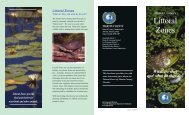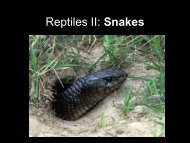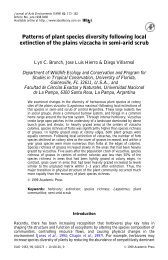l. scott mills - Wildlife Ecology and Conservation - University of Florida
l. scott mills - Wildlife Ecology and Conservation - University of Florida
l. scott mills - Wildlife Ecology and Conservation - University of Florida
Create successful ePaper yourself
Turn your PDF publications into a flip-book with our unique Google optimized e-Paper software.
L. SCOTT MILLS<br />
<strong>Wildlife</strong> Biology Program<br />
College <strong>of</strong> Forestry <strong>and</strong> <strong>Conservation</strong><br />
<strong>University</strong> <strong>of</strong> Montana<br />
Missoula, MT 59812<br />
Phone: (406) 243-5552<br />
EDUCATION:<br />
July 1993<br />
July 1987<br />
May 1983<br />
Ph.D., Biology<br />
<strong>University</strong> <strong>of</strong> California, Santa Cruz, CA<br />
Advisor: Michael Soulé<br />
(Began at Univ. Michigan 1988-89, moved with advisor to UCSC)<br />
M.S., <strong>Wildlife</strong> <strong>Ecology</strong><br />
Utah State <strong>University</strong>, Logan, UT<br />
Advisor: Fred Knowlton<br />
B.S., Zoology<br />
North Carolina State <strong>University</strong>, Raleigh, NC<br />
(one-year National Student Exchange to Univ. Idaho 1980-81).<br />
PRESENT FACULTY POSITION:<br />
Jun. 1995 – Present Pr<strong>of</strong>essor (September 2004-present)<br />
Associate Pr<strong>of</strong>essor (September 1999 – September 2004)<br />
Assistant Pr<strong>of</strong>essor (June 1995 – September 1999)<br />
<strong>Wildlife</strong> Biology Program, College <strong>of</strong> Forestry <strong>and</strong> <strong>Conservation</strong><br />
The <strong>University</strong> <strong>of</strong> Montana, Missoula, MT<br />
Research <strong>and</strong> teaching emphasis on wildlife population biology, integrating<br />
genetic <strong>and</strong> population modeling into field studies <strong>of</strong> populations in<br />
fragmented l<strong>and</strong>scapes.<br />
OTHER EXPERIENCE (As a faculty member):<br />
June 2003, Mountain Lake Biological Station (<strong>University</strong> <strong>of</strong> Virginia)<br />
July 2004<br />
<strong>Conservation</strong> Biology<br />
1-month field course; 4 semester credits<br />
July 2002-<br />
August 2003<br />
August 1993-<br />
May 1995<br />
Sabbatical, Fisheries <strong>and</strong> <strong>Wildlife</strong>, Virginia Tech <strong>University</strong><br />
Blacksburg, VA<br />
Visiting Assistant Pr<strong>of</strong>essor<br />
<strong>University</strong> <strong>of</strong> Idaho, Moscow, ID<br />
UNDERGRADUATE STUDENT ADVISING (<strong>University</strong> <strong>of</strong> Montana):<br />
General Advising: Advise approximately 40 undergraduates per year.<br />
Honors Thesis Advising: In the time that I have been at Univ. MT, I have mentored 25 students on<br />
Honors or Senior Thesis projects. Nine <strong>of</strong> these students have received <strong>University</strong> research awards<br />
totaling $23,000, <strong>and</strong> several have published papers (see publications). My “REAP” program, the<br />
education component <strong>of</strong> my NSF CAREER Grant, has also been a great success for outreach.
2<br />
GRADUATE STUDENT ADVISING:<br />
Students Completing Ph.D. Degrees to Date:<br />
Ellen Cheng: “Climate Change, gene flow, <strong>and</strong> the legendary synchrony <strong>of</strong> snowshoe hares” (Fall<br />
2010)<br />
Heather Johnson: “Escaping the extinction vortex: Identifying factors affecting population<br />
performance <strong>and</strong> recovery in endangered Sierra Nevada bighorn sheep” (Spring 2010).<br />
Sue Cox Griffin: “Demography <strong>and</strong> ecology <strong>of</strong> a declining endemic: the Olympic marmot” (Fall<br />
2007; co-advised with Mark Taper).<br />
John Citta: “Metapopulation ecology using mountain bluebirds as a model system.” (Spring 2005;<br />
co-advised with Mark Lindberg).<br />
Paul Griffin: “Source-sink dynamics <strong>of</strong> snowshoe hares in a fragmented l<strong>and</strong>scape.” (November<br />
2003).<br />
Michael Schwartz: “The influence <strong>of</strong> gene flow <strong>and</strong> l<strong>and</strong>scape location on genetic variation in two<br />
threatened carnivores: the Canada lynx <strong>and</strong> San Joaquin kit fox.” (Fall 2002)<br />
David Tallmon: “Genetic, demographic, <strong>and</strong> ecological effects <strong>of</strong> habitat fragmentation.” (Spring<br />
2001; co-advised with Fred Allendorf)<br />
Students Completing M.S. Degrees to Date:<br />
Jesse Newby, MS: “”Puma dispersal ecology in the central Rocky Mountains.” (Spring 2011).<br />
Tempa Tshering, MS (non-thesis): “Teaching <strong>Wildlife</strong> Biology in Bhutan.” (Fall ’08).<br />
Carly Walker: “Influences <strong>of</strong> l<strong>and</strong>scape structure on snowshoe hare populations in fragmented<br />
forests.” (Spring 2005)<br />
Julia Witzcuk: “Predation by invasive coyotes on declining endemic Olympic marmots.”<br />
(Spring’07).<br />
Jenny Woolf: “Effects <strong>of</strong> thinning <strong>and</strong> prescribed burning on birds <strong>and</strong> small mammals.” (Spring<br />
2003)<br />
Tammy Mildenstein: “Habitat selection <strong>of</strong> large flying foxes using radiotelemetry: targeting<br />
conservation efforts in Subic Bay Philippines.” (Spring 2002)<br />
Reesa Yale: “Do highways influence connectivity in small mammals?” (Fall 2002)<br />
Kevin Lair: "The effects <strong>of</strong> forest fragmentation <strong>and</strong> forest edge on Columbian Mouse <strong>and</strong> Southern<br />
Red-Backed vole demography." (Spring 2001)<br />
John Citta: “An evaluation <strong>of</strong> demographic sensitivity analysis models.” (Spring 1998)<br />
Current Graduate Students:<br />
Julie Betsch, PhD<br />
Tammy Mildenstein, PhD<br />
Tshewang Wangchuck, PhD<br />
Marketa Zimova, MS<br />
Post-Docs Supported:<br />
Rebecca Taylor (2009-present)<br />
Richard Fredrickson (2007-2010)<br />
Cindy Hartway (2006-2010)<br />
Matt Kaufmann (2004-2006)<br />
Karen Hodges (2000-2003)
3<br />
PUBLICATIONS (reverse chronological order):<br />
BOOKS<br />
MILLS, L. S. CONSERVATION OF WILDLIFE POPULATIONS: DEMOGRAPHY, GENETICS, AND<br />
MANAGEMENT. BLACKWELL PRESS, 2007. 407 PAGES. (MS FOR 2 ND EDITION TO PUBLISHER IN JULY<br />
2011)<br />
MILLS, L. S., TSHERING, T., WANGCHUK, T. EDITORS. WILDLIFE RESEARCH TECHNIQUES IN<br />
RUGGED MOUNTAINOUS ASIAN LANDSCAPES. IN FINAL PREPARATION FOR PUBLICATION IN BHUTAN.<br />
(SUMMER 2011 TARGET PUBLICATION DATE)<br />
.<br />
JOURNAL ARTICLES (NOTE: UNDERGRADUATE CO-AUTHORS INDICATED BY **):<br />
1) Johnson, H. E., L. S. Mills, J. D. Wehausen, T. R. Stephenson, <strong>and</strong> G. Luikart. In Press.<br />
From lambs to lambda: effects <strong>of</strong> inbreeding depression on recovery <strong>of</strong> endangered bighorn<br />
sheep. <strong>Conservation</strong> Biology.<br />
2) Walker, C. W., Hodges, K. E., <strong>and</strong> L. S. Mills. 2011. Influence <strong>of</strong> st<strong>and</strong> <strong>and</strong> l<strong>and</strong>scape<br />
features on snowshoe hare densities in fragmented forests. Journal <strong>of</strong> Mammalogy. In<br />
Press.<br />
3) Hebblewhite, M., M. Musiani, <strong>and</strong> L. S. Mills. 2010. Restoration <strong>of</strong> gene flow among<br />
reintroduced Northern Rockies wolf populations. Molecular <strong>Ecology</strong> 19:4383-4385.<br />
4) Pierson, J. C., L. S. Mills, <strong>and</strong> D. P. Christian. 2010. Foraging patterns <strong>of</strong> cavity-nesting<br />
birds in fire-suppressed <strong>and</strong> prescribe-burned ponderosa pine forests in Montana. Open<br />
Environmental Sciences 4:49-60.<br />
5) Johnson, H. R., L. S. Mills, T. Stevenson, <strong>and</strong> J. Weyhausen. 2010. Population-specific<br />
vital rate contributions influence management <strong>of</strong> an endangered ungulate. Ecological<br />
Applications. 20:1753-1765.<br />
6) Johnson, H. R., L. S. Mills, J. Weyhausen, <strong>and</strong> T. Stevenson. 2010. Combining ground<br />
count, telemetry, <strong>and</strong> mark-resight data to infer population dynamics in an endangered<br />
species. Journal <strong>of</strong> Applied <strong>Ecology</strong>. 47:1083-1093.<br />
7) Griffin, S. C., M. L. Taper., R. H<strong>of</strong>fman, <strong>and</strong> L. S. Mills. 2010. Ranking Mahalanobis<br />
distance models to develop specific predictions <strong>of</strong> occupancy from presence-only data.<br />
Journal <strong>of</strong> <strong>Wildlife</strong> Management. 74:1112-1121.<br />
8) Humbert, J-Y, L. S. Mills, J. S. Horne, <strong>and</strong> B. Dennis. 2009. A better way to estimate<br />
population trend. Oikos 118:1487-1498.<br />
9) Hodges, K.. E., L. S. Mills, <strong>and</strong> K. Murphy. 2009. Snowshoe hare distribution <strong>and</strong><br />
abundance in Yellowstone National Park. Journal <strong>of</strong> Mammalogy. 90:870-878.<br />
10) Griffin, P. C., <strong>and</strong> L. S. Mills. 2009. Sinks without borders: snowshoe hare dynamics in a<br />
complex l<strong>and</strong>scape. Oikos 118:1487-1498.<br />
11) Griffin, S.C., P. C. Griffin, M. L. Taper, <strong>and</strong> L. S. Mills. 2009. Marmots on the move?<br />
Dispersal in a declining mountain mammal. Journal <strong>of</strong> Mammalogy. 90:686-695.<br />
12) Witczuk, J., S. Pagacz, <strong>and</strong> L. S. Mills. 2008. Optimizing methods for monitoring<br />
programs: Olympic marmots as a case study. <strong>Wildlife</strong> Research 35:788-797.<br />
13) Hodges, K. E. <strong>and</strong> L. S. Mills. 2008. Designing fecal pellet surveys for snowshoe hares.<br />
Forest <strong>Ecology</strong> <strong>and</strong> Management. 256:1918-1926.<br />
14) Harris, N. C., M. Kauffman, <strong>and</strong> L. S. Mills. 2008. Inferences about ungulate population<br />
dynamics derived from age ratios. Journal <strong>of</strong> <strong>Wildlife</strong> Management 72:1143-1151.
15) Griffin, S. C., M. L. Taper, R. H<strong>of</strong>fman, <strong>and</strong> L. S. Mills. 2008. The case <strong>of</strong> the missing<br />
marmots: are metapopulation dynamics or range-wide declines responsible? Biological<br />
<strong>Conservation</strong> 141:1293-1309.<br />
16) Griffin, S. C., L. S. Mills, <strong>and</strong> M. Taper. 2007. Female Olympic marmots (Marmota<br />
Olympus) reproduce in consecutive years. American Midl<strong>and</strong> Naturalist 158:221-225<br />
17) Griffin, P. C. <strong>and</strong> L. S. Mills. 2007. Pre-commercial thinning reduces snowshoe hare<br />
abundance in the short term. Journal <strong>of</strong> <strong>Wildlife</strong> Management 71:559-564.<br />
18) Griffin, S. C., T. Valois**, M. L. Taper, <strong>and</strong> L. S. Mills. 2007. The impact <strong>of</strong> tourism on<br />
Olympic marmot behavior <strong>and</strong> demography. <strong>Conservation</strong> Biology 21:1070-1081.<br />
19) Hard, J.J., Mills, L.S. <strong>and</strong> Peek, J.M. 2006. Genetic implications <strong>of</strong> reduced survival <strong>of</strong><br />
male red deer under harvest. <strong>Wildlife</strong> Biology 12:349-403.<br />
20) Griffin, P.C., S. C. Griffin, C. **Waroquiers, <strong>and</strong> L. S. Mills. 2005. Mortality by<br />
moonlight: predation risk <strong>and</strong> the snowshoe hare. Behavioral <strong>Ecology</strong> 16:938-944.<br />
21) Mills, L. S., P. C. Griffin, K. E. Hodges, K. McKelvey, L. Ruggiero, <strong>and</strong> T. **Ulizio. 2005.<br />
Pellet count indices compared to mark-recapture estimates for evaluating snowshoe hare<br />
density. Journal <strong>of</strong> <strong>Wildlife</strong> Management 69:1053-1062.<br />
22) Mildenstein, T. L., S. C. Stier, C. E. Nuevo-Diego, <strong>and</strong> L. S. Mills. 2005. Habitat selection<br />
<strong>of</strong> endangered <strong>and</strong> endemic large flying-foxes in Subic Bay, Philippines. Biological<br />
<strong>Conservation</strong> 126:93-102.<br />
23) Schwartz, M. K., <strong>and</strong> L. S. Mills. 2005. Gene flow after inbreeding leads to higher survival<br />
in deer mice. Biological <strong>Conservation</strong> 123:413-420.<br />
24) Tallmon, D. A., <strong>and</strong> L. S. Mills. 2004. Edge effects <strong>and</strong> isolation: California red-backed<br />
voles revisited. <strong>Conservation</strong> Biology 18:1658-1664.<br />
25) Leberg, P. L., M. Carloss, L. Dugas, K. L. Pilgrim, L. S. Mills, M. C. Green, <strong>and</strong> D. S.<br />
Scognamillo. 2004. Recent record <strong>of</strong> a cougar in Louisiana, with notes on diet, based on<br />
analysis <strong>of</strong> fecal materials. Southeastern Naturalist 2:653-658.<br />
26) Schwartz MK, Mills LS, Ortega Y, Ruggiero L, Allendorf FW. 2003. L<strong>and</strong>scape Location<br />
Affects Genetic Variation <strong>of</strong> Canada Lynx (Lynx canadensis). Molecular <strong>Ecology</strong> 12:1807-<br />
1816.<br />
27) Tallmon, D. A., E. S. Jules, N. J. **Radke, <strong>and</strong> L. S. Mills. 2003. Of mice <strong>and</strong> men <strong>and</strong><br />
trillium: cascading effects <strong>of</strong> forest fragmentation. Ecological Applications 13:1193-1203.<br />
28) Bienen, L., P. C. Griffin, C. M. Gillin, <strong>and</strong> L. S. Mills. 2003. Estimating pregnancy rates<br />
<strong>and</strong> litter size in snowshoe hares using ultrasound. <strong>Wildlife</strong> Society Bulletin 31:1066-1072.<br />
29) **Riddle, A. E., K. L. Pilgrim, L. S. Mills, K. S. McKelvey, L. F. Ruggiero. 2003.<br />
Identification <strong>of</strong> mustelids using mitochondrial DNA <strong>and</strong> non-invasive sampling.<br />
<strong>Conservation</strong> Genetics. 4:241-243.<br />
30) Funk, W.C., <strong>and</strong> L. S. Mills. 2003. Potential causes <strong>of</strong> population declines in forest<br />
fragments in an Amazonian frog. Biological <strong>Conservation</strong>. 111:205-214.<br />
31) Hoekman, S. T., L. S. Mills, D. W. Howerter, J. H. Devries, <strong>and</strong> I. J. Ball. 2002. Sensitivity<br />
analysis <strong>of</strong> the life cycle <strong>of</strong> mid-continent mallards. Journal <strong>of</strong> <strong>Wildlife</strong> Management.<br />
66:883-900.<br />
32) Mills, L. S. 2002. False samples are not the same as blind controls. Nature 415:471.<br />
33) McKelvey, K. S., G. W. McDaniel, L. S. Mills, P. C. **Griffin. 2002. Effects <strong>of</strong> plot size<br />
<strong>and</strong> shape on pellet density estimates for snowshoe hare. <strong>Wildlife</strong> Society Bulletin 30:751-<br />
755.<br />
4
34) Schwartz, M. K., L. S. Mills, K.S. McKelvey, L.F. Ruggiero, <strong>and</strong> F. W. Allendorf. 2002.<br />
DNA reveals high dispersal synchronizing the population dynamics <strong>of</strong> Canada lynx. Nature<br />
415:520-522.<br />
35) Biek, R., W. C. Funk, B. A. Maxell, <strong>and</strong> L. S. Mills. 2002. What is missing in amphibian<br />
decline research: Insights from ecological sensitivity analysis. <strong>Conservation</strong> Biology.<br />
16:728-734.<br />
36) Tallmon, D. A., H. M. **Draheim, L. S. Mills, <strong>and</strong> F. W. Allendorf. 2002. Insights into<br />
recently fragmented vole populations from combined genetic <strong>and</strong> demographic data.<br />
Molecular <strong>Ecology</strong> 11:699-709.<br />
37) Biek, R., L. S. Mills, <strong>and</strong> B. Bury. 2002. Terrestrial <strong>and</strong> stream amphibians across clearcut-forest<br />
interfaces in the Siskiyou Mountains, Oregon. Northwest Science 76:129-140.<br />
NOTE: Biek was an undergraduate Honors student from Germany who worked on this<br />
project.<br />
38) Reed, J. M., L. S. Mills, J. B. Dunning, Jr., E. S. Menges, K. S. McKelvey, R. Frye, S. R.<br />
Beissinger, <strong>and</strong> M-C Anstett, <strong>and</strong> P. Miller. 2002. Emerging issues in population viability<br />
analysis. Invited Paper, <strong>Conservation</strong> Biology 16:7-19.<br />
39) Mills, L. S., K. L. Pilgrim, M. K. Schwartz, <strong>and</strong> K. McKelvey. 2000. Identifying lynx <strong>and</strong><br />
other North American felids based on mtDNA analysis. <strong>Conservation</strong> Genetics 1:285-288.<br />
40) Mills, L. S., D. F. Doak, <strong>and</strong> M. J. Wisdom. 2000. Elasticity analysis for conservation<br />
decision-making: Reply to Ehrlen et al., <strong>Conservation</strong> Biology 15:281-283.<br />
41) Mills, L. S., J. J. Citta, K. Lair, M. Schwartz, D. Tallmon. 2000. Estimating animal<br />
abundance using non-invasive DNA sampling: Promise <strong>and</strong> Pitfalls. Ecological<br />
Applications 10:283-294.<br />
42) Wisdom, M. J., L. S. Mills, <strong>and</strong> D. F. Doak. 2000. Life-stage simulation analysis:<br />
estimating vital rate effects on population growth for conservation. <strong>Ecology</strong> 81:628-641.<br />
43) Mills, L. S., D. F. Doak, <strong>and</strong> M. J. Wisdom. 1999. The reliability <strong>of</strong> conservation actions<br />
based on sensitivity analysis <strong>of</strong> matrix models. <strong>Conservation</strong> Biology 13:815-829.<br />
44) Jules, E., E. Frost, D. Tallmon, <strong>and</strong> L. S. Mills. 1999. Ecological consequences <strong>of</strong> forest<br />
fragmentation in the Klamath region. Natural Areas Journal 19:368-378.<br />
45) Citta, J. J., <strong>and</strong> L. S. Mills. 1999. What do demographic sensitivity analyses tell us about<br />
controlling brown-headed cowbirds? Studies in Avian Biology 18:121-134.<br />
46) Soulé, M. E., <strong>and</strong> L. S. Mills. 1998. No need to Isolate Genetics. Science 282:1658-1659.<br />
47) Wisdom, M. J., <strong>and</strong> L. S. Mills. 1997. Using sensitivity analysis to guide population<br />
recovery: Prairie chickens as an example. Journal <strong>of</strong> <strong>Wildlife</strong> Management 61:302-312.<br />
48) Mills, L. S., <strong>and</strong> F. W. Allendorf. 1996. The one-migrant-per-generation rule in<br />
conservation <strong>and</strong> management. <strong>Conservation</strong> Biology 10:1509-1518.<br />
49) Mills, L. S. 1996. “Cheetah extinction: genetics or extrinsic factors?” <strong>Conservation</strong><br />
Biology 10:315.<br />
50) Morrison, M. L., L. S. Mills, <strong>and</strong> A. J. Kuenzi. 1996. Study <strong>and</strong> management <strong>of</strong> an<br />
isolated, rare population: The Fresno Kangaroo rat. <strong>Wildlife</strong> Society Bulletin 24:602-606.<br />
51) Power, M.E., D. Tilman, J. Estes, B. A. Menge, W. J. Bond, L. S. Mills, G. Daily, J. C.<br />
Castilla, J. Lubchenco, <strong>and</strong> R. T. Paine. 1996. Challenges in the quest for keystones.<br />
Bioscience 46:609-620.<br />
52) Mills, L. S., S. G. Hayes, C. Baldwin, M. J. Wisdom, J. Citta**, D. J. Mattson, <strong>and</strong> K.<br />
Murphy. 1996. Factors leading to different viability predictions for a grizzly bear data set.<br />
<strong>Conservation</strong> Biology 10:863-873.<br />
5
53) Mills, L. S. 1995. Edge effects <strong>and</strong> isolation: red-backed voles on forest remnants.<br />
<strong>Conservation</strong> Biology 9:395-403.<br />
54) Power, M. E., <strong>and</strong> L. S. Mills. 1995. The keystone cops meet in Hilo. Trends in Research<br />
in Evolution <strong>and</strong> <strong>Ecology</strong>. 10:182-184.<br />
55) Scott, J. M., T. H. Tear, <strong>and</strong> L. S. Mills. 1995. Socioeconomics <strong>and</strong> the recovery <strong>of</strong><br />
endangered species: biological assessment in a political world. <strong>Conservation</strong> Biology<br />
9:214-216.<br />
56) Mills, L. S., <strong>and</strong> P. E. Smouse. 1994. Demographic consequences <strong>of</strong> inbreeding in remnant<br />
populations. American Naturalist 144:412-431.<br />
57) Doak, D., <strong>and</strong> L. S. Mills. 1994. A useful role for theory in conservation. <strong>Ecology</strong> 75:615-<br />
626.<br />
58) **Clarkson, D. A., <strong>and</strong> L. S. Mills. 1994. Ecological factors associated with Hypogeous<br />
sporocarps in fragmented forests. Northwest Science 68:259-265.<br />
59) **Tallmon, D.A., <strong>and</strong> L. S. Mills. 1994. Log use <strong>and</strong> home ranges <strong>of</strong> California red-backed<br />
voles on a forest remnant. Journal <strong>of</strong> Mammalogy. 75:97-101.<br />
60) Mills, L. S., M. S. Soulé, <strong>and</strong> D. F. Doak. 1993. The keystone species concept in ecology<br />
<strong>and</strong> conservation. Bioscience 43:219-224.<br />
61) Mills, L. S., R. J. Fredrickson, B. B. Moorhead. 1993. Characteristics <strong>of</strong> old-growth forests<br />
associated with northern spotted owls in Olympic National Park. Journal <strong>of</strong> <strong>Wildlife</strong><br />
Management 57:315-321.<br />
62) Mills, L. S., <strong>and</strong> F. F. Knowlton. 1991. Coyote space use in relation to prey abundance.<br />
Canadian Journal <strong>of</strong> Zoology 69:1516-1521.<br />
63) Mills, L. S., <strong>and</strong> F. F. Knowlton. 1989. Observer performance in known <strong>and</strong> blind radiotelemetry<br />
accuracy tests. Journal <strong>of</strong> <strong>Wildlife</strong> Management. 52:340-342.<br />
ARTICLES IN BOOKS (AND BOOK REVIEWS IN JOURNALS) (ALL INVITED ARTICLES):<br />
64) Mills, L. S., J. M. Scott, K. M. Strickler, <strong>and</strong> S. A. Temple. 2011. <strong>Ecology</strong> <strong>and</strong><br />
management <strong>of</strong> small populations. In Techniques for wildlife investigations <strong>and</strong><br />
management. Sixth edition. The <strong>Wildlife</strong> Society, Bethesda, Maryl<strong>and</strong>, USA.<br />
65) Kelly, M. A., L. S. Mills, <strong>and</strong> J. S. Betsch. In Press. Non-Invasive Sampling. In Boitani,<br />
L. <strong>and</strong> R. Powell, editors. Carnivore <strong>Ecology</strong> <strong>and</strong> <strong>Conservation</strong>.<br />
66) Running, S. W. <strong>and</strong> L. S. Mills. 2009. Terrestrial Ecosystem Adaptation. Resources for<br />
the Future Report for the Climate Policy Program at RFF. Access at:<br />
http://www.rff.org/rff/documents/RFF-Rpt-Adaptation-RunningMills.pdf<br />
67) Mills, L. S. 2008. Crossing Disciplines for Endangered Species. Review for <strong>Ecology</strong> <strong>of</strong><br />
Scott, J. M., D. D. Goble, <strong>and</strong> F.W. Davis, editors. The Endangered Species Act at Thirty:<br />
Conserving Biodiversity in Human-Dominated L<strong>and</strong>scapes (Volume 2). Isl<strong>and</strong> Press,<br />
Washington, D.C. <strong>Ecology</strong> 89:592-593.<br />
68) Mills, L. S. 2006 “Contributing Author” to “Chapter 14: North America” by Field, C. B.,<br />
L. D. Mortsch, M. Brklacich, D. L. Forbes, P. Kovaks, J. A. Patz, S. W. Running <strong>and</strong> M. J.<br />
Scott, in: Climate Change 2007: Impacts, Adaptation <strong>and</strong> Vulnerability. Contribution <strong>of</strong><br />
Working Group II to the Fourth Assessment Report <strong>of</strong> the Intergovernmental Panel on<br />
Climate Change, M. L. Parry, O. F. Canziani, J. P. Palutik<strong>of</strong>, P. J. van der Linden <strong>and</strong> C.<br />
E. Hanson, Eds., Cambridge <strong>University</strong> Press, Cambridge, UK, 6127-652.<br />
69) Mildenstein, T.L., L.S. Mills, P. L<strong>and</strong>res, G. Rochefort, J. Scharberl. 2006.<br />
6
Recreation impacts on wildlife: review <strong>of</strong> recent research <strong>and</strong> a call for investigation <strong>of</strong><br />
population <strong>and</strong> community level effects. Final report to Mount Rainier National Park<br />
VERP Program.<br />
70) Mills, L. S., J. M. Scott, K. M. Strickler, <strong>and</strong> S. A. Temple. 2005. <strong>Ecology</strong> <strong>and</strong><br />
management <strong>of</strong> small populations. Pages 691-713 in Braun, C. E., editor. Techniques for<br />
wildlife investigations <strong>and</strong> management. Sixth edition. The <strong>Wildlife</strong> Society, Bethesda,<br />
Maryl<strong>and</strong>, USA. (Invited Article)<br />
71) Mills, L. S., <strong>and</strong> M. E. Soulé. 2006. A brief history <strong>of</strong> the role <strong>of</strong> genetics in<br />
conservation. Invited article (“box”) in <strong>Conservation</strong> Genetics textbook by F. Allendorf<br />
<strong>and</strong> G. Luikart.<br />
72) Mills, L. S., M. K. Schwartz, D. A. Tallmon, <strong>and</strong> K. P. Lair. 2003. Measuring <strong>and</strong><br />
interpreting changes in connectivity for mammals in coniferous forests. Pages 587-613 in<br />
C. J. Zabel <strong>and</strong> R. G. Anthony, editors. Mammal Community Dynamics: Management<br />
<strong>and</strong> <strong>Conservation</strong> in the Coniferous Forests <strong>of</strong> Western North America. Cambridge<br />
<strong>University</strong> Press, New York, USA.<br />
73) Griffin, P. C., <strong>and</strong> L. S. Mills. 2003 “Snowshoe hares in a dynamic managed l<strong>and</strong>scape.”<br />
Pages 438-449 in Editors H. R. Akcakaya, M. A. Burgman, O. Kindvall, C. Wood, P.<br />
Sjogren-Gulve, J. Hatfield, <strong>and</strong> M. A. McCarthy. Species <strong>Conservation</strong> <strong>and</strong><br />
Management: Case Studies. Oxford <strong>University</strong> Press.<br />
74) Mills, L. S., <strong>and</strong> M. Lindberg. 2002. “Sensitivity Analysis to Evaluate the Consequences<br />
<strong>of</strong> <strong>Conservation</strong> Actions.” Pages 338-366 in S. R. Beissinger <strong>and</strong> D. R. McCullough,<br />
editors. Population Viability Analysis. <strong>University</strong> <strong>of</strong> Chicago Press.<br />
75) Mills, L. S. 2002. “Genetics, Demography, <strong>and</strong> Viability <strong>of</strong> Fragmented Populations.”<br />
(Book Review) Quarterly Review <strong>of</strong> Biology 77:222-223.<br />
76) Mills, L. S., <strong>and</strong> D. Tallmon. 1999. “Genetic issues in forest fragmentation.” Pages 171-<br />
184 in Forest Fragmentation: <strong>Wildlife</strong> <strong>and</strong> Management Implications. J. Rochelle, L. A.<br />
Lehmann, <strong>and</strong> J. Wisniewski, eds. Brill Publishers (Netherl<strong>and</strong>s).<br />
77) Dobson, A., K. Ralls, M. Foster, M. E. Soule, D. Simberl<strong>of</strong>f, D. Doak, J. A. Estes, L. S.<br />
Mills, D. Mattson, R. Dirzo, H. Arita, S. Ryan, E. A. Norse, R. F. Noss, <strong>and</strong> D. Johns.<br />
1999. “Connectivity: maintaining flows in fragmented l<strong>and</strong>scapes.” Pages 129-171 In<br />
Soulé, M. E. <strong>and</strong> J. Terborgh, editors. Continental <strong>Conservation</strong>: Scientific Foundations<br />
<strong>of</strong> Regional Reserve Networks. Isl<strong>and</strong> Press.<br />
78) Groom, M., D. B. Jensen, R. L. Knight, S. Gatewood, L. Mills, D. Boyd-Heger, L. S.<br />
Mills, <strong>and</strong> M. E. Soulé. 1999. “Buffer zones: benefits <strong>and</strong> dangers <strong>of</strong> compatible<br />
stewardship.” Pages 191-198 In Soulé, M. E. <strong>and</strong> J. Terborgh, editors. Continental<br />
<strong>Conservation</strong>: Scientific Foundations <strong>of</strong> Regional Reserve Networks. Isl<strong>and</strong> Press.<br />
79) Mills, L. S. 1997. “Book Review: Population Management for Survival <strong>and</strong> Recovery:<br />
Analytical Methods <strong>and</strong> Strategies in Small Population <strong>Conservation</strong>.” Journal <strong>of</strong><br />
<strong>Wildlife</strong> Management 61:251-252.<br />
80) Mills, L. S. 1996. “Fragmentation <strong>of</strong> a natural area: Dynamics <strong>of</strong> isolation for small<br />
mammals on forest remnants.” Pages 199-219 In Wright, G., editor. National Parks <strong>and</strong><br />
Protected Areas: Their Role in Environmental Protection. Blackwell Press.<br />
81) Mills, L.S. 1996. “Keystone Species.” in Paehlke, R., editor. Encyclopedia <strong>of</strong><br />
<strong>Conservation</strong> <strong>and</strong> Environmentalism. Garl<strong>and</strong> Publishing Co., New York.<br />
82) Mills, L.S. 1995. “Keystone Species.” Pages 381-387 in Encyclopedia <strong>of</strong> Environmental<br />
Biology. Academic Press, Inc.<br />
7
83) Mills, L.S. 1994. “Book Review: Principles <strong>of</strong> <strong>Conservation</strong> Biology.” Northwest<br />
Science 68:303-304.<br />
84) Soulé, M.E., <strong>and</strong> L. S. Mills. 1992. “<strong>Conservation</strong> genetics <strong>and</strong> conservation biology: a<br />
troubled marriage.” Pages 55-69 in S<strong>and</strong>lund, O. T., K. Hindar, <strong>and</strong> A. H. D. Brown, eds.,<br />
<strong>Conservation</strong> <strong>of</strong> Biodiversity for Sustainable Development. Sc<strong>and</strong>inavian Univ. Press,<br />
Oslo.<br />
8<br />
OTHER PROFESSIONAL PUBLICATIONS:<br />
85) Hodges, K. E. <strong>and</strong> L. S. Mills. 2005. Snowshoe hares in Yellowstone. Yellowstone<br />
Science 13:3-6.<br />
86) Yale, R. <strong>and</strong> L. S. Mills. 2000. “Do highways fragment small mammal populations?”<br />
Proceedings <strong>of</strong> the International Conference on <strong>Ecology</strong> <strong>and</strong> Transportation.<br />
87) Zager, P., L. S. Mills, W. Wakkinen, <strong>and</strong> D. Tallmon. 1995. “Woodl<strong>and</strong> caribou --a<br />
conservation dilemma.” Endangered Species Update 12:1-4.<br />
88) Mills, L. S. 1995. “The use <strong>of</strong> population ecology approaches to assess re-introduction <strong>of</strong><br />
endangered Selkirk Caribou.” Final report, submitted to: a) Idaho Fish <strong>and</strong> Game; b)<br />
Washington Department <strong>of</strong> <strong>Wildlife</strong>.<br />
89) Mills, L. S. 1995. “The role <strong>of</strong> population ecology in guiding wildlife translocations.”<br />
Final report, submitted to U.S. Forest Service, Missoula, MT.<br />
90) Cassidy, K., E. O. Garton, W. B. Krohn, L. S. Mills, J. M. Scott, <strong>and</strong> K. Williams. 1994.<br />
“National guidelines for assessment <strong>of</strong> reliability <strong>of</strong> GAP vertebrate distributions.”<br />
National Biological Survey.<br />
91) Mills, L. S. 1994. “Effects <strong>of</strong> forest fragmentation on small mammals in Southwest<br />
Oregon.” COPE Report [(Coastal Oregon Productivity Enhancement Program), an<br />
educational non-technical publication for forest managers.] 7:6-8.<br />
92) Mills, L. S. <strong>and</strong> M. Morrison. 1993. “Final Report: <strong>Ecology</strong> <strong>of</strong> the Fresno Kangaroo Rat<br />
<strong>and</strong> associated small mammals at NAS Lemoore”. Prepared for Lemoore Naval Air<br />
Station.<br />
93) Fredrickson, R.J., L.S. Mills, <strong>and</strong> B.B. Moorhead. 1989. “Spotted owl surveys in<br />
Olympic National Park -- 1988 <strong>and</strong> 1989.” Olympic National Park, Port Angeles, WA.<br />
94) Mills, L.S., R.J. Fredrickson, B.B. Moorhead, <strong>and</strong> D.U. Sharp. 1988. “Spotted owl<br />
distribution along elevation <strong>and</strong> vegetation gradients in Olympic National Park.” 1988<br />
Progress Report. Olympic National Park, Port Angeles, WA.
9<br />
SUCCESSFUL RESEARCH GRANTS AND PROJECTS ( SINCE 1999)<br />
LTREB: Evaluating Population Cycles <strong>and</strong> Spatial Synchrony Using Long-Term Demographic<br />
<strong>and</strong> Genetic Data on Snowshoe Hares; National Science Foundation; $375,000. 3/09 – 3/14.<br />
REU Supplement to NSF LTREB grant; National Science Foundation; $7,000. 3/9 – 2/11.<br />
Connecting down-scaled climate models to adaptation for a key forest species. USGS<br />
NCCWSC; $412,290. 10/1/09-9/30/12.<br />
Population Viability Analysis for Greater Sage-Grouse (coPI with Dr. David Naugle). Bureau <strong>of</strong><br />
L<strong>and</strong> Management; $100,943. 11/4/08 – 9/30/11.<br />
Patterns <strong>and</strong> mechanisms <strong>of</strong> spatial population synchrony for snowshoe hares. (Doctoral<br />
Dissertation Improvement Grant with Ellen Cheng, PhD Student); NSF; $11,985. 07-08 –<br />
07/09.<br />
Developing a cost-effective non-invasive alternative to live-trapping for abundance estimation.<br />
(Co PI with PhD student Ellen Cheng). Animal Welfare Institute. $10,000. 5/1/08 – 4/30/09<br />
Evaluation <strong>of</strong> risks <strong>and</strong> benefits <strong>of</strong> population augmentation options to facilitate recovery <strong>of</strong><br />
bighorn sheep in the Peninsular Ranges, CA. 77K; CA Fish <strong>and</strong> Game; 6/1/08-6/1/09.<br />
Impacts <strong>of</strong> agriculture through habitat loss <strong>and</strong> subsidy on threatened native species: case study<br />
<strong>of</strong> flying foxes in the Philippines. Bat <strong>Conservation</strong> International. $4,000 (With PhD student<br />
Tammy Mildenstein).<br />
A Risk Assessment Framework for Defining Scientifically-Defensible Recovery Goals for Listed<br />
Species. “SERDP” Program, Dept. <strong>of</strong> Defense. 8/2006-9/2009. $296,880.<br />
Diet <strong>and</strong> genetic analysis <strong>of</strong> coyotes <strong>and</strong> other carnivores in Olympic National Park. Olympic<br />
National Park. $5,200. 4/1/2007-12/30/2008.<br />
Population Viability Assessment for Mariana Fruit Bats on Guam (With PhD student Tammy<br />
Mildenstein). US Fish <strong>and</strong> <strong>Wildlife</strong> Service $5,350. 2/26/2007-4/30/2007.<br />
Marmots on the move? Dispersal in a declining mountain mammal. National Park Service.<br />
$12,500. 4/2007-10/2007. (With PhD student Sue Griffin).<br />
Quantitative conservation analysis support for The Nature Conservancy. 11/2006-10/2007.<br />
$32,964. (Co-PI with Elizabeth Crone).<br />
Development <strong>of</strong> wildlife indicators at Mt. Rainier National Park. 9/1/2006-4/30/2008. $23,383.<br />
Genetic <strong>and</strong> demographic factors to improve recovery <strong>of</strong> Sierra Nevada Bighorn Sheep.<br />
California Dept. <strong>of</strong> Fish <strong>and</strong> Game. 7/2005-7/2008. $144,210.<br />
Connectivity in a heterogeneous l<strong>and</strong>scape: the genetics <strong>and</strong> population dynamics <strong>of</strong> Olympic<br />
Marmots. National Science Foundation “Collaborative Research” Award. Co-PI with Mark<br />
Taper (Montana State <strong>University</strong>). 8/2004-8/2007. $325,000.<br />
Assessing long-term trophic control <strong>of</strong> aspen demography: effects <strong>of</strong> wolves <strong>and</strong> elk over large<br />
spatial scales. National Parks Foundation <strong>and</strong> Ecological Society <strong>of</strong> America. 5/2004-<br />
5/2007. $150,000. Co-PI with Matthew Kauffman (post-doc) <strong>and</strong> John Maron (DBS).<br />
Sensitivity analysis <strong>of</strong> sage grouse. Bureau <strong>of</strong> L<strong>and</strong> Management. 7/2005-6/2006. $12,000.<br />
(With Dave Naugle).<br />
Evaluating the prey base for lynx in Glacier National Park: snowshoe hare abundance, habitat<br />
use, <strong>and</strong> population dynamics. National Park Service, Natural Resources Protection<br />
Program. 1/1/2005-12/31/2007. $432,745. Co-PI with Karen Hodges (my post-doc).<br />
Snowshoe hare <strong>and</strong> red squirrel relative abundance <strong>and</strong> distribution in Yellowstone National<br />
Park. National Park Service. 5/1/2002-12/30/2004. $21,500.
Temporal dynamics <strong>of</strong> snowshoe hares in Yellowstone National Park. 9/1/2004-12/30/2005.<br />
$8,500. Co-PI with Karen Hodges (post-doc).<br />
Snowshoe hare habitat use in fragmented forests in northern Washington. Washington Dept <strong>of</strong><br />
Fish <strong>and</strong> <strong>Wildlife</strong>. 1/1/2003-6/25/2005. $87,968. Co-PI with Karen Hodges (post-doc).<br />
REU (Research Experience for Undergraduates) Supplement to Snowshoe Hare/Lynx<br />
Demography <strong>and</strong> Genetics study. National Science Foundation, 5/1/2002-5/31/2003.<br />
$6,000. PI.<br />
Measuring <strong>and</strong> evaluating connectivity in Olympic marmots. NSF/EPSCoR. 5/1/2002-1/31/03.<br />
$36,725. (A sister proposal was submitted by Mark Taper, my collaborator at MSU).<br />
Comparison <strong>of</strong> pellets to hare densities. USFS Science <strong>and</strong> Leadership in Cooperation Grant.<br />
9/2000-6/ 2004. $221,500. PI<br />
Molecular analysis <strong>of</strong> threatened lynx <strong>and</strong> other mammals in the national park system. National<br />
Park Service. 10/1/2001-9/1/2004. $18,000 + $11,500 (As <strong>of</strong> December 02) = $29,500. PI.<br />
Population dynamics <strong>of</strong> mountain bluebirds. North American Bluebird Society. 1/15/2002-<br />
1/15/03. $1,000. Co-PI with John Citta.<br />
Measuring <strong>and</strong> evaluating connectivity in Olympic marmots. 5/1/2002- 4/30/2003. $7,420. A.<br />
Cox, Jr. PI.<br />
Calibrating l<strong>and</strong>scape models <strong>of</strong> spatially structured snowshoe hare populations. McIntire-<br />
Stennis . 1/2001-5/2004. $39,994. Co-PI with John Goodburn.<br />
Acquisition <strong>of</strong> instrumentation for research in evolutionary <strong>and</strong> conservation genetics. National<br />
Science Foundation. 6/13/2000-8/312000. $128,000. Co-PI with P. Kukuk <strong>and</strong> F.<br />
Allendorf.<br />
Snowshoe hare response to thinning. Plum Creek. 2/28/2000-7/1/2002. PI $82,884<br />
Supplemental Funding to support Undergraduate Research (REU). National Science<br />
Foundation. 3/2000-12/2002. $9,750. PI.<br />
Highways as potential barriers to movement <strong>and</strong> genetic exchange in small vertebrates.<br />
Montana Department <strong>of</strong> Transportation. $176,591. 5/1/2000-12/31/2002. $176,591.<br />
Snowshoe hares <strong>and</strong> lynx in a fragmented l<strong>and</strong>scape: merging demographic <strong>and</strong> genetic<br />
approaches.National Science Foundation CAREER grant. 6/1999-6/2003. $330,000. PI.<br />
Development <strong>and</strong> application <strong>of</strong> methods in conservation genetics. USDA Rocky Mountain<br />
Research Station. 9/1999-12/2000. $36,000. Note: This money funded a full-time technician<br />
plus equipment to allow me to analyze DNA samples from nationwide carnivore sampling.<br />
Habitat use <strong>and</strong> home range <strong>of</strong> endemic flying foxes (Acerodon jubatus <strong>and</strong> Pteropus vampyrus<br />
ianensis) at Subic Bay, Phillipines using radio telemetry. <strong>Wildlife</strong> <strong>Conservation</strong> Society.<br />
2/1999-6/2000. $9,770. Co-PI with T. Mildenstein.<br />
10
SELECTED MAJOR COMPETITIVE GRANTS IN SUPPORT OF RESEARCH BY MY GRADUATE STUDENTS<br />
(SINCE 2000)<br />
NSF Dissertation Improvement Grant (approx. $10,000):<br />
Paul Griffin (2001); Ellen Cheng (2008)<br />
NSF Graduate Student Fellowship (approx. $105,000):<br />
Sue Griffin (2003).<br />
EPA Graduate Student Fellowship ($84,000);<br />
Sue Griffin (2001).<br />
<br />
Canon National Parks Science Scholarship (approx. $80,000; 3 yr):<br />
Sue Griffin (2004); Heather Johnson (2007)<br />
PEO Dissertation Fellowship (approx. $15,000):<br />
Heather Johnson (2009)<br />
Budweiser <strong>Conservation</strong> Scholarship (approx. $10,000):<br />
Jenny Woolf (2000), Sue Griffin (2004), Heather Johnson (2007)<br />
<br />
Bertha Morton Award (Highest award for <strong>University</strong> <strong>of</strong> Montana Graduate Students):<br />
Sue Griffin; Tammy Mildenstein; John Citta; David Tallmon; Mike Schwartz; Ellen<br />
Cheng<br />
11<br />
SELECTION OF PROFESSIONAL PRESENTATIONS [SINCE 1995]:<br />
INVITED WORKSHOPS AS LEADER:<br />
“<strong>Wildlife</strong> Research Techniques in Rugged Mountainous Asian L<strong>and</strong>scapes”. Ugyen Wangchuk Institute<br />
for <strong>Conservation</strong> <strong>and</strong> the Environment. Bhumthang, Bhutan. May 13-20, 2010<br />
Small Mammal Research Techniques <strong>and</strong> Survey Design. Manas National Park, Bhutan. Feb. 11-16,<br />
2010.<br />
Using Sensitivity Analysis <strong>of</strong> Population Viability Models to Guide Management Decisions. Workshop<br />
at National Meeting <strong>of</strong> The <strong>Wildlife</strong> Society; Miami, FL; 11/8/2008.<br />
SERDP: Risk Assessment framework for defining scientifically defensible recovery goals for listed<br />
species. Coeur d’Alene, Idaho, February 2007.<br />
“Monitoring with Noninvasive Genetic Sampling.” (half-day workshop). Part <strong>of</strong> a workshop for<br />
Forest Service Biologists: <strong>Wildlife</strong> Habitat <strong>and</strong> Plant Management Workshop. Blacksburg, VA.<br />
March 2003.<br />
“Population Monitoring <strong>and</strong> Harvest Management” (Full-day workshop). Full-day session at<br />
Montana <strong>Wildlife</strong> Society Meetings; March 4, 1997.<br />
“Inventory <strong>and</strong> Monitoring <strong>of</strong> Animal <strong>and</strong> Plant Metapopulations: Genetic issues.” (Full-day as part <strong>of</strong><br />
a workshop for state <strong>and</strong> federal biologists by Dr. O. Garton <strong>of</strong> the <strong>University</strong> <strong>of</strong> Idaho.<br />
September 8, 1996 <strong>and</strong> August 12, 1997.<br />
“Population Viability Analysis: Concepts, Tools <strong>and</strong> Case Studies.” (Full-day workshop). Held<br />
February 2, 1995, at Montana <strong>Wildlife</strong> Society Meetings, Billings, <strong>and</strong> June 2, 1995 at the<br />
<strong>University</strong> <strong>of</strong> Montana [for Forest Service Biologists].
INVITED WORKSHOPS AS PARTICIPANT/PRESENTER [SINCE 1996]:<br />
<strong>Florida</strong> Panther model development workshop (<strong>Florida</strong> Fish <strong>and</strong> Game, USFWS, <strong>and</strong> Univ. <strong>of</strong><br />
<strong>Florida</strong>); St. Petersburg, FL; Oct. 2007.<br />
Partners in Environmental Technology Technical Symposium <strong>and</strong> Workshop; DoD SERDP<br />
Program; Washington, D.C. December 2008.<br />
The influence <strong>of</strong> wolves <strong>and</strong> multiple factors on elk trends in Idaho, Montana <strong>and</strong> Wyoming (Dr.<br />
Matt Kauffman, convener); Missoula, MT, June 2006.<br />
Mills, L. S. Small mammal <strong>and</strong> bird responses to thinning <strong>and</strong> burning. 6 th Annual SMIC<br />
meeting, Missoula, MT, September 14, 2004.<br />
Scientific Panel assembled by Olympic National Park <strong>and</strong> Bureau <strong>of</strong> Reclamation to investigate<br />
effects <strong>of</strong> removal <strong>of</strong> dams on Elwha River [Port Angeles, WA, March 2003].<br />
Scientific Panel Invited by International Whaling Commission to discuss use <strong>of</strong> genetic tools for<br />
determining stock structure <strong>and</strong> movement. [“Testing <strong>of</strong> Spatial Structure<br />
Models”workshop]; San Diego, CA , January 2003.<br />
“St<strong>and</strong>ards for Non-Invasive Sampling <strong>of</strong> <strong>Wildlife</strong> Populations.” Workshop held at <strong>University</strong><br />
<strong>of</strong> Idaho, Moscow, ID, May 21, 2002.<br />
“Determining Focal Species for monitoring.” [Barry Noon, organizer] Fort Collins, CO. May<br />
22-23, 2001. Sponsor: USDA Forest Service.<br />
“Consequences <strong>of</strong> Sex <strong>and</strong> Age-specific Harvest on Washington State Elk Populations.”<br />
Sponsored by Washington Dept. <strong>of</strong> <strong>Wildlife</strong>; Summer/Fall 2001 (5 meetings in<br />
Washington).<br />
Invited Participant in workshop on “Influence <strong>of</strong> L<strong>and</strong>scape-level Factors on the Dynamics <strong>of</strong><br />
Riparian Forest Ecosystems Along the Sacramento River.” Part <strong>of</strong> a NSF incubation<br />
project, Chico, CA, February 17-19, 2001.<br />
“Rocky Mountain Network Vertebrate <strong>and</strong> Vascular Plant Inventory Workshop.” National Park<br />
Service. Missoula, MT, March 28, 2000-March 30, 2000.<br />
“Wilderness Ecological Monitoring Workshop.” Sponsored by Aldo Leopold Wilderness<br />
Research Institute. <strong>University</strong> <strong>of</strong> Montana, Missoula, MT, May 23, 1999.<br />
“Ecological Basis <strong>of</strong> the Wildl<strong>and</strong>s Project.” Sponsored by Michael Soule, John Terborgh, <strong>and</strong><br />
the Wildl<strong>and</strong>s Project. Tucson, AZ, November 20-22, 1997.<br />
“Study Design <strong>and</strong> Species Selection for Vertebrate Indicator Species.” Sponsored by Olympic<br />
National Park <strong>and</strong> USGS, Quilcene, WA, December 19, 1997.<br />
“Wolf Management <strong>and</strong> Research Workshop.” Sponsored by Nez Perce Tribe, Missoula, MT,<br />
June 26-27, 1997.<br />
“Long-Term Inventory <strong>and</strong> Monitoring Workshop: Selection <strong>of</strong> Indicator Species.” Sponsored<br />
by the Olympic National Park <strong>and</strong> the National Biological Service, Port Angeles, WA, May<br />
5-9, 1997.<br />
“Workshop on Developing Endangered Species Act Classification Criteria for Humpback<br />
Whales.” Sponsored by National Marine Fisheries Service, Seattle, WA, January26 -<br />
January 28, 1997.<br />
“Research Review <strong>and</strong> Steering Workshop, Consortium for the Study <strong>of</strong> North Temperate<br />
Mountain Ecosystems.” Missoula, MT, December 13, 1997.<br />
“Sensitivity Analysis as a Management Tool for <strong>Wildlife</strong> Population Assessment.” Santa Cruz,<br />
CA, May 20-22, 1996.<br />
12
SELECTION OF INVITED CONFERENCE TALKS [SINCE 2000]:<br />
Mills, L. S. Can camouflage keep up with climate change? Seasonal coat color confronts a globally<br />
decreasing snowpack. Invited Symposium talk, The <strong>Wildlife</strong> Society, Snowbird, Utah, Oct.<br />
2010.<br />
Mills, L. S. Overview <strong>of</strong> impacts <strong>and</strong> possible responses for terrestrial wildlife in western Montana.<br />
Anticipating Climate Change: A FWP workshop focused on northern Coniferous Forest<br />
ecosystems, alpine meadows, <strong>and</strong> the Clark Fork upstream <strong>of</strong> Idaho to the Bitterroot River<br />
headwaters. Kalispell, MT 12/09. (Invited Plenary Lecture)<br />
Mills, L. S. <strong>Wildlife</strong> responses to climate change: Adapt, move, or die. Conference <strong>of</strong> biologists <strong>and</strong><br />
planners from National Park Service, US Forest Service, <strong>and</strong> Montana: Climate Change in the<br />
Crown <strong>of</strong> the Continent: Identifying Multi-Jurisdictional Strategies. Whitefish, MT 12/3/08. .<br />
(Invited Plenary Lecture)<br />
Mills, L. S., Will Lepus successfully respond to global warming: A proposed rangewide research<br />
initiative. Invited Plenary Talk, 3 rd World Lagomorph Conference, Morelia, Mexico, 10/30/08.<br />
Mills, L. S. Keeping conservation biology thriving for the next 22 years. Plenary Lecture, Annual<br />
Research Symposium <strong>of</strong> the Montana Chapter <strong>of</strong> the Society for <strong>Conservation</strong> Biology.<br />
10/10/2008.<br />
Mills, L. S, J-Y Humbert, J. S. Horne <strong>and</strong> B. Dennis. Is my population recovering, decreasing, or<br />
stationary? Improving the status quo for estimating exponential trend from count data.<br />
Society for <strong>Conservation</strong> Biology, Chattanooga, TN, July 2008.<br />
Dennis, B., J-Y Humbert, L. S. Mills <strong>and</strong> J. S. Horne. Estimating ecological trend: which model<br />
should I use? Society for <strong>Conservation</strong> Biology, Chattanooga, TN, July 2008.<br />
Mills, L. S., J. M. Scott, O. Garton, M. Kauffman, C. Hartway, J. Horne, K. Strickler. New<br />
biological tools for assessing management <strong>of</strong> listed species on DoD l<strong>and</strong>s. North American<br />
<strong>Wildlife</strong> <strong>and</strong> Natural Resources Conference, Portl<strong>and</strong>, OR, March 2007.<br />
Mills. L. S. A wildlife scientist’s view on the concept <strong>of</strong> viability <strong>of</strong> wildlife populations. 28 th<br />
Annual Public L<strong>and</strong> Law Conference, Public L<strong>and</strong> & Resources Law Review. Missoula, MT,<br />
Oct. 2004.<br />
Hodges, K.E. <strong>and</strong> L.S. Mills. Spatial ecology <strong>of</strong> snowshoe hares. Joint meeting, Lynx Biology Team<br />
<strong>and</strong> Lynx Steering Committee, Winthrop, WA, Oct. 2004.<br />
McKelvey, K. S. <strong>and</strong> L. S. Mills. Lynxgate: Genesis, controversy, <strong>and</strong> lessons learned. Invited Talk<br />
at “Ethics Panel” at Ecological Society <strong>of</strong> America meetings, Portl<strong>and</strong>, OR, July 2004.<br />
Mills, L. S., <strong>and</strong> R. Conrey. Highways affect connectivity <strong>of</strong> small mammals… <strong>and</strong> brief thoughts on<br />
deciding how much connectivity is too little. Invited symposium talk, Society for <strong>Conservation</strong><br />
Biology, Duluth, MN, July 2003.<br />
Mills, L. S. Identification <strong>of</strong> carnivore species using non-invasive sampling. Plenary Speaker in<br />
Workshop on “Modern Genetics for Resource Managers”, George Wright Society<br />
(National Park Service Meeting) April 2003.<br />
Mills, L. S. “Identification <strong>of</strong> carnivores using non-invasive sampling.” Invited Talk at Northwest<br />
Chapter, The <strong>Wildlife</strong> Society, Spokane, WA, April 2002.<br />
Mills, L. S. “Non-invasive genetic sampling <strong>of</strong> lynx distribution <strong>and</strong> movements.” Plenary Session<br />
Talk in Practical Genetics for <strong>Wildlife</strong> Biologists Workshop. Sponsored by the Oregon Chapter<br />
<strong>of</strong> the <strong>Wildlife</strong> Society. Portl<strong>and</strong>, OR, November 16, 2001.<br />
13
Mills, L. S. <strong>and</strong> P. Griffin. “Snowshoe hare demography in different habitats.” Snowshoe Hare<br />
Research Meeting, sponsored by U.S. Forest Service, Missoula, MT, December 4, 2001.<br />
Mills, L. S. “Use <strong>of</strong> genetic sampling methods: current <strong>and</strong> future uses.” Invited Talk at Lynx in<br />
Rocky Mountain Parks Workshop, Missoula, MT, March 8, 2001. Sponsored by<br />
National Park Service.<br />
Mills, L. S. “What we can (<strong>and</strong> cannot) say about wildlife populations using non-invasive genetic<br />
sampling.” Montana <strong>Wildlife</strong> Society Meeting, Butte, MT, February 28-March 2, 2001.<br />
Mills, L. S. “Snowshoe hare ecology <strong>and</strong> the implications for forest management.” 1 hour<br />
presentation to Forest Service biologists <strong>and</strong> silviculturalists at USFS Regional training.<br />
Missoula, MT, March 19, 2001.<br />
Mills, L. S., M. K. Schwartz, D. A. Tallmon, <strong>and</strong> K. P. Lair. “Measuring <strong>and</strong> interpreting<br />
changes for connectivity for mammals in coniferous forests.” The <strong>Wildlife</strong> Society, Nashville,<br />
TN, September 16, 2000.<br />
Mills, L. S., K. McKelvey, M. K. Schwartz, K. L. Pilgrim, L. F. Ruggiero. “Non-invasive Genetic<br />
Sampling <strong>of</strong> Lynx Distribution <strong>and</strong> Abundance.” Carnivores 2000, Denver, CO, November 12-<br />
15, 2000.<br />
Schwartz, M., L. S. Mills, <strong>and</strong> L. F. Ruggiero. “Gene flow, genetic variation, <strong>and</strong> ESU’s <strong>of</strong> Canada<br />
lynx.” Carnivores 2000, Denver, CO, November 12-15, 2000.<br />
Schwartz, M., <strong>and</strong> L. S. Mills. “Using DNA-based census <strong>and</strong> effective population size estimators<br />
with wild populations.” Swiss <strong>Wildlife</strong> Society Monitoring Conference, Zurich, Switzerl<strong>and</strong>,<br />
January 2000.<br />
Schwartz, M., <strong>and</strong> L. S. Mills. “Using non-invasive genetic sampling to estimate geographic range<br />
<strong>and</strong> population size <strong>of</strong> Canada lynx.” Swiss <strong>Wildlife</strong> Society Monitoring Conference, Zurich,<br />
Switzerl<strong>and</strong>, January 2000.<br />
Ruggiero, L., L. S. Mills, E. Sutherl<strong>and</strong>, K. McKelvey, J. Squires. “Snowshoe hares <strong>and</strong><br />
pre-commercial thinning: addressing manager’s concerns.” 2000 Annual Meeting <strong>of</strong> the<br />
Western Forest Carnivore Committee, Whitefish, MT, May 2, 2000.<br />
McKelvey, K., J. Claar, L. S. Mills, L. Ruggiero, K. Pilgrim, G. Hanvey, <strong>and</strong> G. McDaniel.<br />
“National lynx survey: 2000 Update.” 2000 Annual Meeting <strong>of</strong> the Western Forest Carnivore<br />
Committee, Whitefish, MT, May 2, 2000.<br />
14<br />
INVITED SEMINARS AT OTHER UNIVERSITIES [SINCE 2000]:<br />
April 2008: <strong>University</strong> <strong>of</strong> Alaska, Juneau.<br />
April 2008: Department <strong>of</strong> <strong>Conservation</strong> Biology; Donana Biological Station, Sevilla, Spain<br />
April 2008: <strong>University</strong> <strong>of</strong> Porto, Portugal<br />
March 2008: <strong>University</strong> <strong>of</strong> <strong>Florida</strong>, <strong>Wildlife</strong> <strong>Ecology</strong> Department<br />
April 2007: <strong>University</strong> <strong>of</strong> Montana, Math/Stats Departmental seminar<br />
Feb. 2006: <strong>University</strong> <strong>of</strong> Montana, Organismal Biology <strong>and</strong> <strong>Ecology</strong> seminar<br />
March 2006: <strong>University</strong> <strong>of</strong> North Dakota, Gr<strong>and</strong> Forks, ND<br />
November 2005: <strong>University</strong> <strong>of</strong> Wellington, New Zeal<strong>and</strong><br />
July 2004: Mountain Lake Biological Station. Pembroke, VA<br />
Feb. 2004: <strong>University</strong> <strong>of</strong> California, Santa Barbara<br />
March 2003: Virginia Tech <strong>University</strong>, Blacksburg, VA
Feb. 2003: <strong>University</strong> <strong>of</strong> Virginia, Charlottesville, VA<br />
Sept. 2002: <strong>University</strong> <strong>of</strong> Maine, Orono, ME<br />
April 2002: Montana State <strong>University</strong>, Bozeman, MT<br />
Feb. 2001: “The Colloquium in the Life Sciences”, Colorado State <strong>University</strong>, Fort Collins, CO.<br />
October 4, 2000: <strong>Ecology</strong> <strong>and</strong> Evolution Program, Univ.<strong>of</strong> British Columbia, Vancouver, BC<br />
March 2000 – <strong>University</strong> <strong>of</strong> Idaho, Moscow, ID.<br />
Feb. 2000 – <strong>University</strong> <strong>of</strong> SW Louisiana, Lafayette, LA.<br />
15<br />
OTHER CONTRIBUTED CONFERENCE PRESENTATIONS (*=STUDENT)<br />
[ONLY SINCE 2001 ARE DETAILED]:<br />
<br />
<br />
<br />
1999 through 2000: 12 contributed presentations.<br />
1995 through 1999: 8 contributed presentations.<br />
Prior to 1995: 9 contributed presentations.<br />
SELECT CONTRIBUTED PRESENTATIONS SINCE 2001:<br />
Pagacz, S., J. Witczuk, S. C. Griffin & L. S. Mills; Optimizing methods for wildlife monitoring<br />
programs: Range-wide occupancy sampling <strong>of</strong> Olympic Marmots. International Congress for<br />
<strong>Conservation</strong> Biology (ICCB) (Edmonton, Alberta); July 2010.<br />
Witczuk, J., S. C. Griffin & L. S. Mills. Non-native coyote predation on endemic marmots;<br />
International Congress for <strong>Conservation</strong> Biology (ICCB) (Edmonton, Alberta); July 2010.<br />
Mills, L. S., J-Y Humbert, J. S. Horne, <strong>and</strong> B. Dennis. A better way to estimate population trend.<br />
European Congress <strong>of</strong> <strong>Conservation</strong> Biology, Prague, Czech Republic, 9/09.<br />
Hodges, K. E., <strong>and</strong> L. S. Mills. Snowshoe hare population dynamics in fragmented western forests.<br />
Ecological Society <strong>of</strong> America, Albuquerque, N.M., 8/6/2009.<br />
Johnson, H.E., L.S. Mills, J.D. Wehausen, <strong>and</strong> T.R. Stephenson. 2009. Integrated analysis <strong>of</strong><br />
minimum count, mark-resight & telemetry data to estimate demographic parameters in an<br />
endangered species. Ecological Society <strong>of</strong> America, Annual National Conference, Alburquerque,<br />
NM. 8/09.<br />
Cheng, E., L.S. Mills, <strong>and</strong> K.E. Hodges. August 2009. Spatial synchrony in snowshoe hares:<br />
investigating large-scale patterns & processes. Ecological Society <strong>of</strong> America (Albuquerque,<br />
NM).<br />
Johnson, H.E., L.S. Mills, T.R. Stephenson, <strong>and</strong> J.D. Wehausen. 2009. Identifying key vital rates for<br />
endangered Sierra Nevada bighorn sheep recovery. Desert Bighorn Council Biannual Meeting,<br />
Gr<strong>and</strong> Junction, CO.<br />
Griffin, S. C., J. W. Witczuk, M. L. Taper, <strong>and</strong> L. S. Mills. Non-native predators implicated in<br />
declines <strong>of</strong> Olympic marmots. George Wright Society conference (National Park Service);<br />
Portl<strong>and</strong>, 3/18/09.<br />
Cheng, E., L.S. Mills, <strong>and</strong> K.H. Hodges. March 2008. Comparison <strong>of</strong> non-invasive genetic <strong>and</strong><br />
traditional approaches to estimating animal abundance. Northwest Section <strong>and</strong> Washington<br />
Chapter <strong>of</strong> The <strong>Wildlife</strong> Society (Spokane, WA)<br />
Cheng, E., L.S. Mills, <strong>and</strong> K.E. Hodges. October 2009. Spatial synchrony in snowshoe hares:<br />
patterns, processes, <strong>and</strong> who cares? Society for <strong>Conservation</strong> Biology (Flagstaff, AZ)
Cheng, E., L.S. Mills, <strong>and</strong> K.E. Hodges. August 2009. Spatial synchrony in snowshoe hares:<br />
patterns, processes, <strong>and</strong> who cares? Society for <strong>Conservation</strong> Biology (Beijing, China)<br />
Harris, N. C., M. Kauffman, <strong>and</strong> L. S. Mills. Ungulate population demography <strong>and</strong> dynamics from<br />
age ratios. The <strong>Wildlife</strong> Society, Tucson, AZ, Sept. 07.2007.<br />
Scott, J. M., L S. Mills, O. Garton, M. Kauffman, C. Hartway, J. Horne, K. Strickler. A risk<br />
assessment framework for defining scientifically defensible recovery goals for listed species.<br />
SERDP/ESTCP annual in-progress review, Arlington, VA. Jan. 2007.<br />
Cheng, E., L.S. Mills <strong>and</strong> K.E. Hodges. 2008. A comparison <strong>of</strong> non-invasive genetic <strong>and</strong> traditional<br />
approaches to estimating animal abundance. Northwest Section <strong>of</strong> The <strong>Wildlife</strong> Society Annual<br />
Meeting. Spokane, WA.<br />
Cheng, E., L.S. Mills <strong>and</strong> K.E. Hodges. 2008. A comparison <strong>of</strong> non-invasive genetic <strong>and</strong> traditional<br />
approaches to estimating animal abundance. Montana Chapter <strong>of</strong> The <strong>Wildlife</strong> Society Annual<br />
Meeting. Missoula, MT.<br />
Griffin, S.C., R. H<strong>of</strong>fman, M.L. Taper, L.S. Mills. February 2007. What can we learn about the<br />
Olympic marmot from habitat surveys? Northwest Scientific Association <strong>and</strong> Northwest Society<br />
for Vertebrate Biologists Joint Meetings. Victoria, BC.<br />
Bryant, A.A., S.C. Griffin, M.L. Taper, L.S. Mills. September 2006. Seasonal mortality patterns in<br />
Vancouver Isl<strong>and</strong> marmots <strong>and</strong> Olympic marmots. The <strong>Wildlife</strong> Society Meetings. Anchorage,<br />
AK.<br />
Griffin, S.C., J. Witczuk, M.L. Taper, L.S. Mills. June 2006. Non-native predators implicated in<br />
declines <strong>of</strong> Olympic marmots (Marmota olympus). American Society <strong>of</strong> Mammalogists<br />
Meetings. Amherst, MA.<br />
Cheng, E., K. Hodges, <strong>and</strong> L. S. Mills. Evaluating the prey base for lynx: snowshoe hare abundance,<br />
habitat use, <strong>and</strong> population dynamics in Glacier National Park. Montana Chapter <strong>of</strong> The <strong>Wildlife</strong><br />
Society Annual Meeting,.Helena, MT. February 2006.<br />
Griffin, S.C., T. Valois, L.S. Mills, M.L. Taper. June 2005. The impact <strong>of</strong> tourism on Olympic<br />
marmot behavior <strong>and</strong> demography. American Society <strong>of</strong> Mammalogists Meetings. Springfield,<br />
MO.<br />
Griffin, S.C., L.S. Mills, M.L. Taper. March 2004. The decline <strong>of</strong> the Olympic marmot: evaluating<br />
the spatial extent <strong>and</strong> causes. Northwest Scientific Association Meetings. Ellensburg, WA.<br />
Walker, C., L.S. Mills, K.E. Hodges, G. Koehler. Effects <strong>of</strong> spatial patterning <strong>of</strong> habitat types on<br />
snowshoe hare abundance in the Okanogan National Forest. Northwest Scientific Association,<br />
77 th Annual Meeting, Ellensburg, WA, March 2004.<br />
Walker, C., L.S. Mills, K.E. Hodges, G. Koehler, K. Aubry. Examining snowshoe hare abundance<br />
relative to l<strong>and</strong>scape-level factors. Northwest Forest Carnivore Meetings, Spokane, WA, April<br />
2004.<br />
Woolf, J. C., L. S. Mills, <strong>and</strong> D. Christian. Effects <strong>of</strong> ponderosa pine forest restoration on foraging<br />
patterns <strong>of</strong> bark-gleaning birds. The <strong>Wildlife</strong> Society, Sept. 2003.<br />
Griffin, S., L. S. Mills, M. L. Taper. Initial evaluation <strong>of</strong> the current population status <strong>of</strong> the<br />
Olympic marmot. Northwest Science Meeting, Forks, WA, March 2003.<br />
Tallmon, D. A., L. S. Mills, <strong>and</strong> F. W. Allendorf. “Genetic <strong>and</strong> demographic tools show how<br />
habitat fragmentation changes the population <strong>and</strong> community ecology <strong>of</strong> two small mammals.”<br />
<strong>Ecology</strong> <strong>of</strong> Insular Biotas Conference, Wellington, New Zeal<strong>and</strong>. February 12-16, 2001.<br />
Tallmon, D. A., <strong>and</strong> L. S. Mills. “Of mice <strong>and</strong> men <strong>and</strong> trillium.” Presented at American Society <strong>of</strong><br />
Mammalogists Conference. June 16-20, 2001. Missoula, MT.<br />
16
Griffin, P. C., Waroquiers, C. S., A. L<strong>and</strong>ro, S. A. Cox, <strong>and</strong> L. S. Mills. “Season, sun, moon, <strong>and</strong><br />
snowshoe hare movements in western Montana.” Presented at American Society <strong>of</strong><br />
mammalogists Conference. June 16-20, 2001. Missoula, MT.<br />
Mills, L. S., P. C. Griffin, C. Henderson, K. McKelvey, <strong>and</strong> J. Squires. “Pellet count indices<br />
compared to mark-recapture estimates for evaluating snowshoe hare density.” Presented at<br />
American Society <strong>of</strong> Mammalogists Conference. June 16-20, 2001. Missoula, MT.<br />
Fuller, J. A., <strong>and</strong> L. S. Mills. “Quantitative Motion Analysis <strong>and</strong> spatial dynamics <strong>of</strong> snowshoe<br />
hares in different habitat types.” Presentation at Society for <strong>Conservation</strong> Biology Conference.<br />
Hilo, Hawaii. July 29-August 1, 2001.<br />
Mildenstein, T. L., S. C. Stier, <strong>and</strong> L. S. Mills. “Habitat use <strong>of</strong> the world’s biggest bats:<br />
Endangered <strong>and</strong> endemic Philippine flying foxes.” Presentation at Society for <strong>Conservation</strong><br />
Biology Conference. Hilo, Hawaii. July 29-August 1, 2001.<br />
Mills, L. S., <strong>and</strong> Kevin Lair. “Use <strong>of</strong> Mark-recapture analysis to quantify movement <strong>and</strong> survival<br />
along forest edges.” Presentation at Society for <strong>Conservation</strong> Biology Conference. Hilo, Hawaii.<br />
July 29-August 1, 2001.<br />
Schwartz, M. K., L. S. Mills, Kevin S. McKelvey, <strong>and</strong> L. Ruggiero. “High gene flow in Canada<br />
lynx leads to the maintenance <strong>of</strong> genetic variation across the l<strong>and</strong>scape.” Presentation at Society<br />
for <strong>Conservation</strong> Biology Conference. Hilo, Hawaii. July 29-August 1, 2001.<br />
Tallmon, David A., L. Scott Mills, <strong>and</strong> Fred W. Allendorf. “Detecting direct <strong>and</strong> indirect effects <strong>of</strong><br />
forest fragmentation with genetics, demographic models, <strong>and</strong> experiments.” Presentation at<br />
Society for <strong>Conservation</strong> Biology Conference. Hilo, Hawaii. July 29-August 1, 2001.<br />
Yale, R., <strong>and</strong> L. S. Mills. “Do highways form barriers to small mammal movement <strong>and</strong> gene flow?”<br />
Presentation at Montana Chapter <strong>of</strong> the <strong>Wildlife</strong> Society. Butte, MT. March 1, 2001.<br />
17<br />
CONFERENCE POSTERS [SINCE 2000]<br />
[PRE-2000 4 WITH UNDERGRADUATE STUDENTS AS FIRST AUTHOR)]<br />
Invited Poster: Hartway, C., L. S. Mills, M. Kauffman, J. M. Scott, O. Garton, J. Horne, <strong>and</strong> K.<br />
Strickler. New tools for prioritizing management actions for species <strong>of</strong> concern on Department <strong>of</strong><br />
Defense l<strong>and</strong>s. The Partners in Environmental Technology Technical Symposium, Dept. <strong>of</strong><br />
Defense. Washington, DC. Dec. 2007<br />
Hartway, C., L. S. Mills, <strong>and</strong> M. Kauffman. Can the effects <strong>of</strong> anthropogenic disturbance on species<br />
demography be generalized? National Military Fish <strong>and</strong> <strong>Wildlife</strong> Association Training<br />
Workshop, Portl<strong>and</strong>, OR. March 2007.<br />
Bryant, A.A., S.C. Griffin, M.L. Taper, L.S. Mills. October 2006. Seasonal mortality patterns in<br />
Vancouver Isl<strong>and</strong> marmots <strong>and</strong> Olympic marmots. Bi-annual British Colombia Provincial<br />
<strong>Wildlife</strong> Meeting. Prince George, BC (poster).<br />
Griffin, S.C., T. Valois, S. Sells, L.S. Mills, M.L. Taper. March 2005. The effects <strong>of</strong> tourist pressure<br />
on behavior <strong>and</strong> demography in Olympic marmots. (poster – presented by S. Sells, an<br />
undergraduate intern on the marmot project 2004). Northwest Scientific Association Meetings,<br />
Portl<strong>and</strong>, OR.<br />
Holben, W.E., E.D. Inkley, <strong>and</strong> L.S. Mills. 2004. Microbial Tools for <strong>Wildlife</strong> Studies:<br />
Biogeographical Analysis <strong>of</strong> Snowshoe Hares Based on Fecal Pellet Micr<strong>of</strong>lora. 104th Annual<br />
Meeting <strong>of</strong> the American Society for Microbiology, New Orleans, LA.
18<br />
SELECT INVITED PRESENTATIONS TO PUBLIC AND/OR NON-UNIVERSITY GROUPS [SINCE 2000]:<br />
Mills, L. S. What wildlife ecology fieldwork is all about. Full-day training session on field techniques<br />
to 6 undergraduates from Puerto Rico participating in the Univ. MT “IM-SURE” Program (6/16/09).<br />
Mills, L. S. Climate change <strong>and</strong> winter coats. Half-day training lectures to all Interpreters/Naturalists at<br />
Glacier National Park, June 10, 2009.<br />
Mills, L. S. Snowshoe hares in Glacier National Park <strong>and</strong> North America: food for lynx <strong>and</strong> a potential<br />
sentinel for climate change. Waterton-Glacier Science <strong>and</strong> History Day, 7/22/08.<br />
Mills, L. S. “Climate change effects on wildlife: move, deal with it, adapt, or die.” Public talk,<br />
Juneau Alaska (Interview about my talk on National Public Radio, Juneau Affiliate: 4/11/08).<br />
Griffin, S.C., J. Witczuk, L.S. Mills, <strong>and</strong> M.L. Taper. June 2007. The Olympic Marmot: Natural History<br />
<strong>and</strong> Research Update. Seminar for interpretive staff. Olympic National Park, Port Angeles, WA.<br />
Griffin, S.C. February 2007. The Olympic Marmot: A Pleistocene Relic in a Rapidly Changing World.<br />
Lecture for the Klahhane Club. Sequim, WA.<br />
Mills, L. S. Applying principles <strong>of</strong> conservation biology. Keynote Lecture to Montana Chapter <strong>of</strong> the<br />
Society for <strong>Conservation</strong> Biology. April 2006.<br />
Griffin, S.C., J. Witczuk, M.L. Taper, L.S. Mills. June 2006. The Olympic Marmot: Sentinel <strong>of</strong> the High<br />
Country. Science in the Parks: Northwest National Parks Science Days. Padilla Bay, WA.<br />
Lynx, Hares, Mice <strong>and</strong> Men: Connectivity for <strong>Wildlife</strong> in a Fragmented L<strong>and</strong>scape; Invited Lecture in<br />
Wilderness Lecture Series, Missoula, MT (4/6/04).<br />
Instructor for “Lynx <strong>and</strong> Hares”, a 3-day “Summer Science Discovery Program”, sponsored by the<br />
Montana Natural History Program for 9 – 13 year olds, July 5-7, 2000.<br />
Instructor for “Field <strong>Ecology</strong> for Educators” Class (Snowshoe hare <strong>and</strong> lynx research) who visited my<br />
Seeley Lake sites, July 13, 2000.<br />
Co-leader <strong>of</strong> “Canada Lynx <strong>and</strong> Snowshoe Hare Field Trip”, one <strong>of</strong> the field trips for the Society<br />
for <strong>Conservation</strong> Biology Meetings, June 14, 2000.<br />
EDITORSHIPS :<br />
Spring 2004 – Fall 2006: Associate Editor <strong>of</strong> Journal <strong>of</strong> <strong>Wildlife</strong> Management, journal <strong>of</strong> The<br />
<strong>Wildlife</strong> Society.<br />
2000-2001: Associate editor <strong>of</strong> Ursus, The Journal <strong>of</strong> the International Association for Bear<br />
Research <strong>and</strong> Management.<br />
2006: Guest Associate Editor for 2articles in Marine Mammal Science.<br />
RECENT INVITED PROFESSIONAL COMMITTEE INVOLVEMENT<br />
Panelist to evaluate all Swedish Biodiversity Research from 2002-2006, sponsored by Swedish<br />
Research Council <strong>and</strong> the Swedish Research Council for Environment, Agricultural Sciences <strong>and</strong><br />
Spatial Planning. Stockholm, Sweden, April 2010.<br />
Panelist for Evolutionary <strong>and</strong> Population <strong>Ecology</strong> Grant Advisory Panel, Washington, D. C.<br />
(October 2004, April 2006)<br />
Panelist for National Science Foundation Doctoral Dissertation Improvement Grant Panel<br />
(Population <strong>and</strong> Evolutionary Processes), Washington, D.C. (December 2008).
Participant in Montana Fish, <strong>Wildlife</strong> <strong>and</strong> Parks’ Science Methodology Review Team as (part <strong>of</strong> the<br />
Crucial Areas <strong>and</strong> <strong>Wildlife</strong> Corridors Assessment Process). (2008)<br />
Member, Western Governors Association Climate Change Working Group to assess “Corridors <strong>and</strong><br />
Climate Change. Involved multiple working sessions <strong>and</strong> production <strong>of</strong> a report unveiled to all<br />
western Governors, Secretary <strong>of</strong> Interior, <strong>and</strong> others (Report can be accessed at:<br />
http://www.westgov.org/wga/publicat/wildlife08.pdf). (December 2007 to June 29, 2008)<br />
Member, Research Subcommittee <strong>of</strong> the National Interagency Lynx/Wolverine Steering Committee.<br />
Spring 2004-2007:<br />
19<br />
ACTIVE INTERNATIONAL RESEARCH PROGRAMS<br />
Phillippines: fruit bat work with Tammy Mildenstein (MS <strong>and</strong> PhD student); 1998-present.<br />
New Zeal<strong>and</strong>: collaborative research / teaching exchange (visited for 10 days in Nov. 2005).<br />
Portugal: NSF-supported exchange with Univ. <strong>of</strong> Porto, Portugal (visited for 10 days in April<br />
2008); part <strong>of</strong> UM delegation to Porto Fall 2009 to set up university exchange; hosted 5 visits by<br />
Portuguese collaborators 2006-present; active research grant collaborators.<br />
Bhutan: Capacity building for ecological research (visited 3 weeks in Jan. 2007; also, 6 month<br />
visit in 2006 supported by Guggenheim Fellowship); two Bhutanese graduate students.
20<br />
AWARDS/COMMENDATIONS<br />
National/International.<br />
John Simon Guggenheim Fellow, 2009 [Lived in Bhutan for 5 months, building local capacity<br />
for conducting wildlife science to incorporate into local conservation decision<br />
Scientific Declaration (Invited) to District Court on genetic issues associated with delisting<br />
Northern Rockies Gray wolves (2008).<br />
Invited Member <strong>of</strong> Western Governor’s Association “Climate Change Working Group”<br />
(2008).<br />
Invited “Contributor” to North America section, 2007 Intergovernmental Panel on Climate<br />
Change Report (IPCC).<br />
2002-04: Elected as one <strong>of</strong> nine Members <strong>of</strong> the North American Section Board <strong>of</strong> Governors<br />
for the Society for <strong>Conservation</strong> Biology.<br />
Spring 2002: Certificate <strong>of</strong> Appreciation Awarded by Cindy S. Swanson, Director <strong>of</strong> WWFRP<br />
(USFS) “For continued support, pr<strong>of</strong>essionalism, <strong>and</strong> partnership with Region 1 <strong>of</strong> the Forest<br />
Service as related to the conservation <strong>of</strong> the Canada lynx”.<br />
March 6, 2002: Invited Testimony to U.S. Congress (House Committee on Natural<br />
Resources) regarding ethics in conservation science (National Lynx Survey).<br />
State <strong>and</strong> <strong>University</strong>-Level<br />
One <strong>of</strong> 3 Pr<strong>of</strong>essors Invited to Speak in 2009-2010 Provost’s Distinguished Lecturer Series<br />
(2009 November). Title <strong>of</strong> talk: “<strong>Wildlife</strong> Biology in a Changing World”.<br />
Bob Watts Communication Award from the Montana Chapter <strong>of</strong> The <strong>Wildlife</strong> Society for my<br />
textbook “<strong>Conservation</strong> <strong>of</strong> <strong>Wildlife</strong> Populations.” (Feb. 2009).<br />
Keynote Speaker for Academic Convocation, <strong>University</strong> <strong>of</strong> Montana. (2006 August)<br />
Keynote speaker for <strong>University</strong> <strong>of</strong> Montana Undergraduate Research Conference (2006 April)<br />
Commencement Speaker, College <strong>of</strong> Forestry <strong>and</strong> <strong>Conservation</strong> (2004 May)<br />
School <strong>of</strong> Forestry Montana Druids Faculty Service Award. Spring 2000.<br />
Most Inspirational Faculty Award (<strong>University</strong> <strong>of</strong> Montana Silent Sentinel student society,<br />
accompanied by $1,000 award from the <strong>University</strong>). (Spring 1998).<br />
Received “Merit” Faculty Evaluations at UM for the following years:<br />
• 1996, 1997, 1999, 2000, 2001, 2002, 2004, 2007
21<br />
MEDIA COVERAGE <strong>and</strong> INTERVIEWS (selected, since 2000)<br />
<br />
<br />
<br />
<br />
<br />
<br />
<br />
<br />
<br />
<br />
<br />
Newsweek magazine, 8/3/09 (“The case <strong>of</strong> the disappearing rabbit”)<br />
National Geographic Kids, October 2009 (Canada lynx: the comeback cat”)<br />
UM publications:<br />
Vision Magazine, 2008 (“Hare today, gone tomorrow?”) <strong>and</strong> Spring 2000<br />
Montanan Magazine, Spring 2008. Featured in “Leaders in the Field” story. Also Spr. 2000.<br />
The Boundary, Pincher Creek, Alberta, 8/8/08 (“global warming creates an awkward predicament<br />
for the snowshoe hare”)<br />
New York Times, 3/10/2009 (“Tools that leave wildlife unbothered widen research horizons”)<br />
Science Daily, 2/24/09 (“Climate change hurting hares: White snowshoe hares can’t hide on brown<br />
earth”).<br />
High Country News, 2/16/09 (“Canary in the old growth: the search for an ecosystem’s vital signs”).<br />
New York Times, 5/6/2007 (“Walking on the wild side <strong>of</strong> a Montana <strong>University</strong>”)<br />
The Nature <strong>of</strong> Things With David Suzuki, 9/28/00 interview.<br />
Multiple interviews regarding our Nature article (Schwartz et al. 2000) on lynx movements:<br />
o Science News<br />
o National Geographic News<br />
o Rocky Mountain News<br />
o Discovery Channel Canada<br />
o National Public Radio “All Things Considered”<br />
Multiple Interviews Jan. 2000 – March 2001 regarding National Lynx Survey (not related to our<br />
lynx movement work).<br />
o Science News<br />
o Audubon magazine<br />
o American Hunter<br />
o Sierra Magazine<br />
o Spokesman-Review newspaper<br />
o Seattle Times newspaper<br />
o Oregonian Newspaper<br />
o Missoulian<br />
o World News Tonight


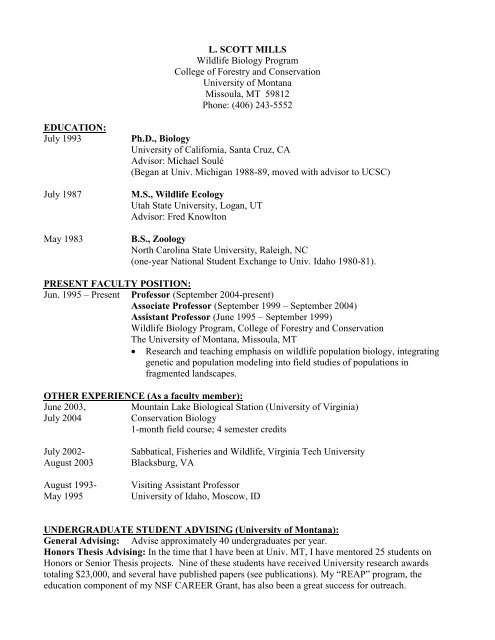
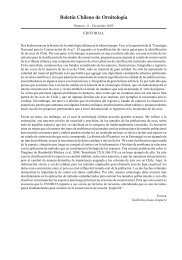
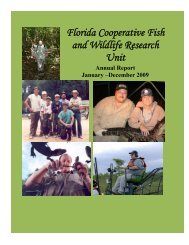
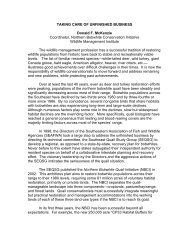
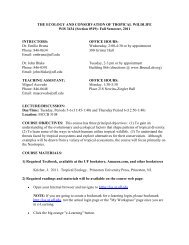


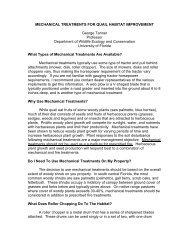
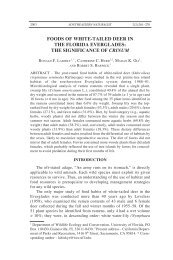
![rivers,lakes.ppt [Read-Only]](https://img.yumpu.com/43445703/1/190x245/riverslakesppt-read-only.jpg?quality=85)
